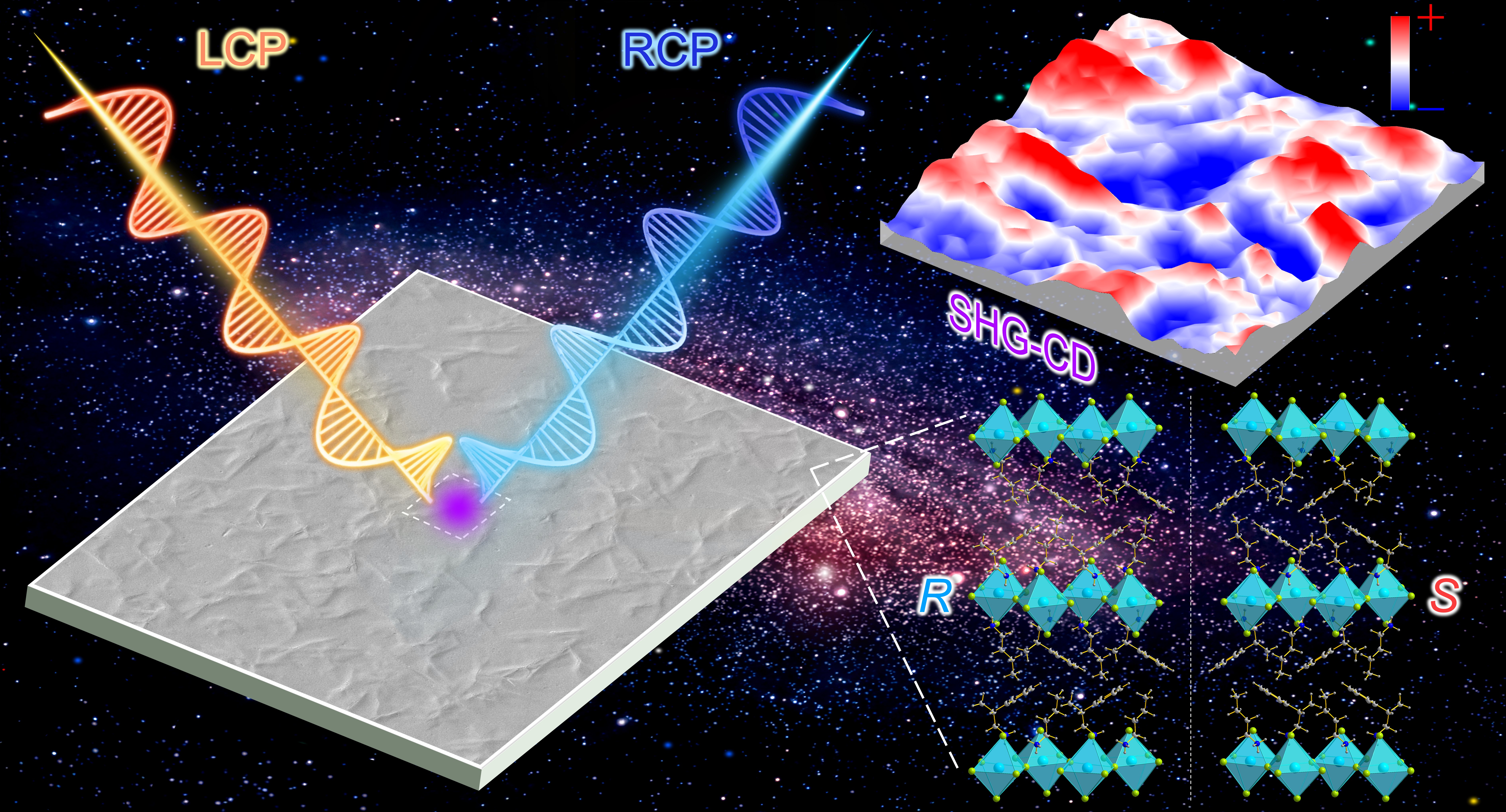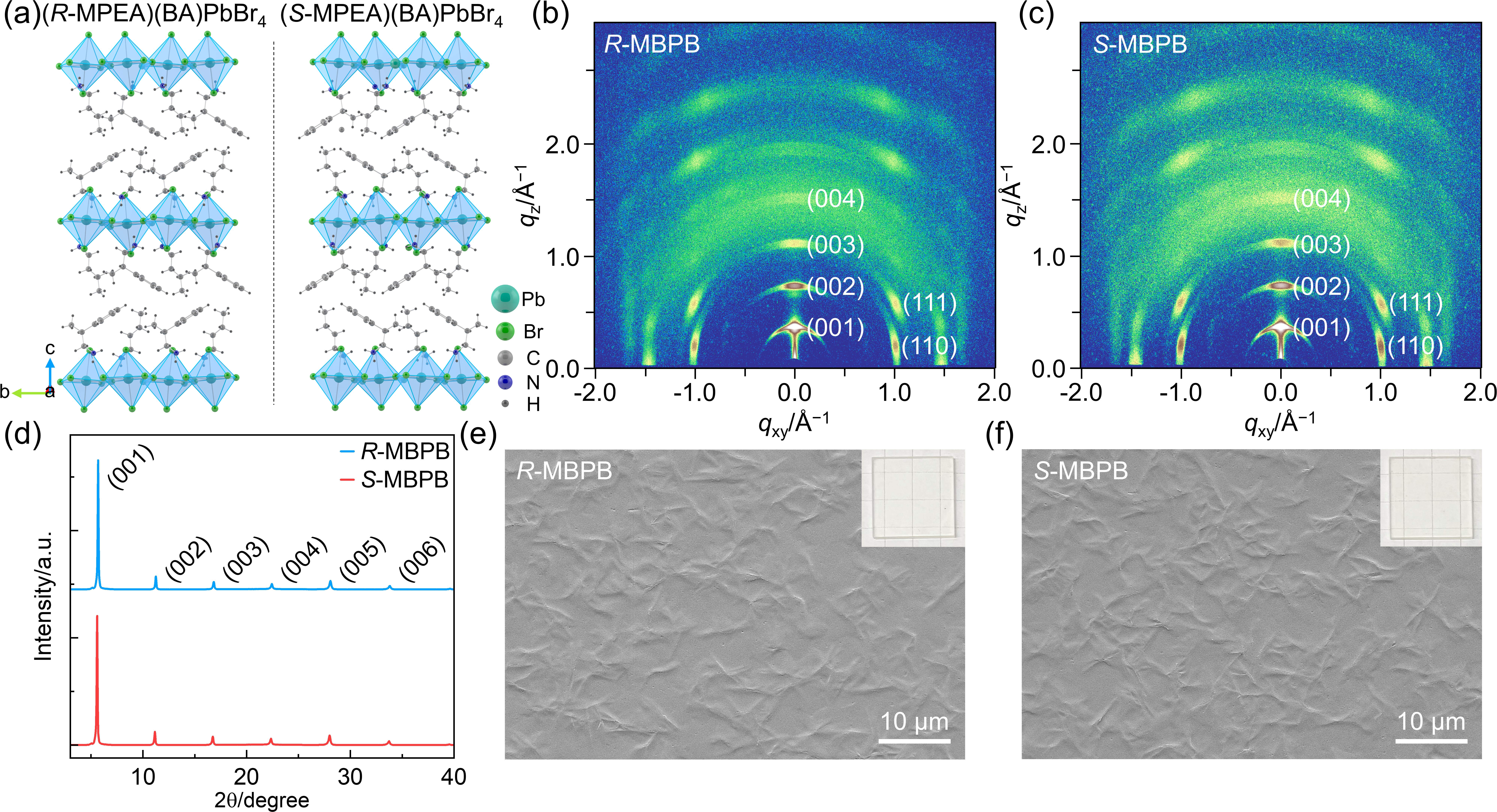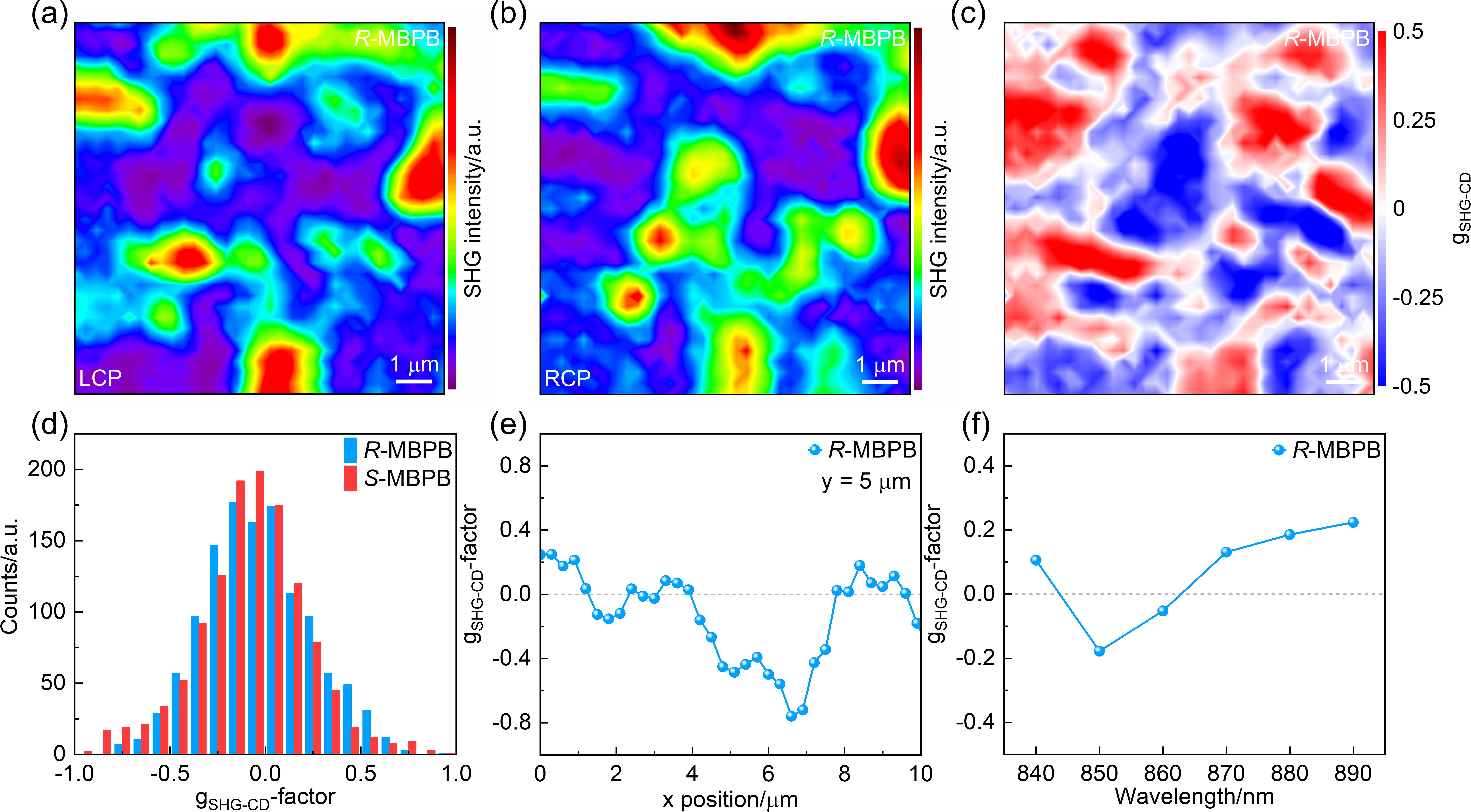
Recently, the international journal "Nano Letters" published online a paper titled "Spatially Correlated Chirality in Chiral Two-Dimensional Perovskites Revealed by Second-Harmonic-Generation Circular Dichroism Microscopy" by Changshun Wang's team at Shanghai Jiao Tong University. This work not only advances the understanding of the mechanism of chiroptical activity in chiral perovskites, but also provides inspiration for the rational design and synthesis of perovskites for chirality-related nonlinear optoelectronic devices.
Fig. 1 Schematic illustration of second-harmonic-generation circular dichroism (SHG-CD) microscopy for detecting spatially correlated chirality in chiral perovskites.
Chirality describes an object in which its mirror image cannot be superimposed onto itself. As an interdisciplinary field that is inseparable from various cutting-edge applications such as asymmetric catalysis, biological sensing, spintronics, optical information processing and communication, chiral optoelectronics has attracted widespread research interest in recent years. Conventionally, the chirality of materials is probed by linear circular dichroism (CD) spectroscopy, but it usually has low signal-to-noise ratio due to the small difference in absorbance (fractions of a percent) for left- and right-handed circularly polarized light. As the nonlinear counterpart of linear CD, second-harmonic-generation circular dichroism (SHG-CD) is defined as the normalized difference in SHG intensity upon excitation with left- versus right-handed circularly polarized light. In comparison to CD, SHG-CD has been proven to possess a much higher chiroptical sensitivity. Chiral organic–inorganic hybrid metal halide perovskites, as a new class of chiral semiconductors, have shown great potential for chiroptoelectronics due to their excellent optoelectronic properties. Nevertheless, understanding of the mechanism of chiroptical activity in chiral perovskites is still insufficient, which will hinder the construction of novel chiral perovskites for high-efficiency optoelectronic and spintronic applications.

Fig. 2 Phase structure, crystallographic orientation and surface morphology of chiral 2D perovskite thin films.
In this work, the researchers applied a spaced cation alloying strategy to introduce chirality into traditional 2D perovskites, and used a one-step solution-processed spin-coating approach to prepare chiral thin films. The crystallographic orientation of the thin films was characterized by 2D grazing-incidence wide-angle X-ray scattering, which demonstrated that the chiral thin films have typical polycrystalline characteristics and overall highly oriented crystallites accompanied by a distribution of random out-of-plane orientation angles. In addition, chiral 2D perovskite thin films exhibit excellent nonlinear optical properties such as strong two-photon absorption with a coefficient up to 1.25 cm/MW and a broad wavelength SHG response of 780-900 nm. Combining the chiroptical sensibility and imaging capability of SHG-CD microscopy, the first experimental demonstration of SHG-CD microarea imaging in chiral perovskite thin films was performed, and the analysis revealed that the spatially correlated chirality in the chiral 2D perovskites was caused by localized out-of-plane supramolecular orientations. Through theoretical calculations, the researchers qualitatively demonstrated the effect of orientation on optical selectivity and further emphasized this localized supramolecular orientation-induced chirality.

Fig. 3 SHG-CD microarea imaging of chiral perovskite thin films.




